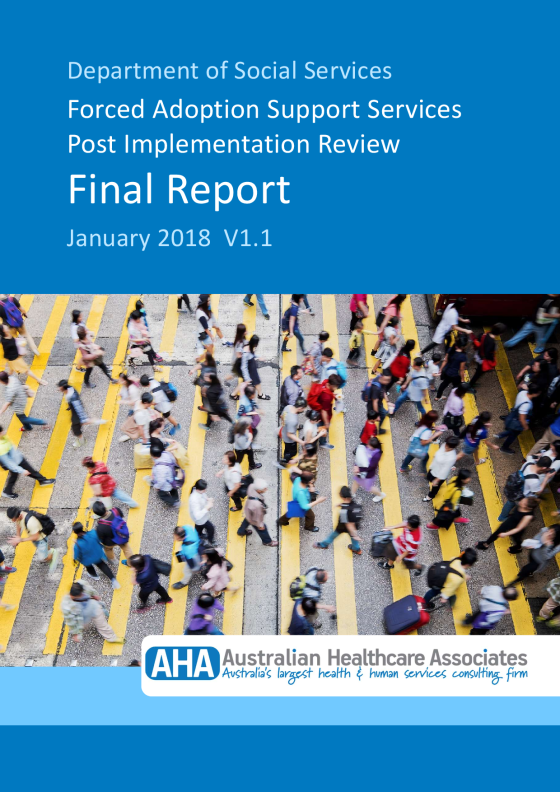About this resource
The PIR included a national public survey, focus groups, interviews, and analysis of key data and documents. AHA consulted with a broad range of stakeholders including FASS providers, people affected by past forced adoption policies and practices (those using FASS as well as those eligible but not using FASS), peer support and advocacy groups, state and territory government representatives delivering similar services, and academics.
The PIR outlines many promising results, including high levels of satisfaction among service users, particularly with the general information, emotional support and general counselling provided. The report also demonstrated that there is a continued need for these services in the community.
The report makes a number of recommendations to enhance service delivery, including:
- greater advertising and promotion of FASS
- improvements to the provision of services including increased access to therapeutic counselling, record searching, DNA testing and to peer support (particularly in regional and remote areas)
- greater clarity and improved transparency for the small grants policy under the program.
The report will form a baseline for future evaluations, as well as informing the future policy direction for FASS.
The Department is working with FASS providers to establish strategies to consider the report findings and leverage off the existing strengths of the program.
Note: Based on feedback received, the full report has been replaced with a revised version (V1.1) to provide some minor factual clarifications.
